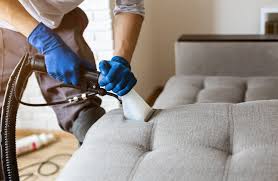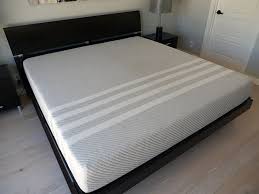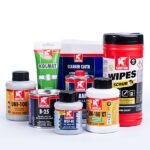When you invest in upholstery cleaning, knowing how long it will take for your furniture to dry is important to help you plan accordingly. Whether you’re using Upholstery Cleaning Staten Island services or opting for a DIY approach, understanding drying times and the factors that affect them will ensure you get the best results.
In this article, we’ll explore drying times for different upholstery types, factors influencing drying times, tips to speed up drying, and why professional upholstery cleaning can offer benefits for both time and quality.
Why Upholstery Drying Time Matters
Upholstery drying time can significantly impact your daily routine, particularly if the furniture is used frequently. The drying time also affects the overall cleanliness and healthiness of the upholstery; furniture that is not allowed to dry properly can retain moisture, leading to mold and mildew growth. This is especially important if you are seeking organic upholstery cleaning services, where you want a green cleaning approach without harmful chemicals.
Average Upholstery Drying Times
On average, upholstery can take anywhere from 2 to 24 hours to dry completely, depending on the material, cleaning method, and environmental conditions. Here’s a general breakdown:
- Synthetic Fabrics: Typically, these materials dry faster than natural ones, with average drying times between 2-4 hours.
- Natural Fabrics: These may take a bit longer, sometimes up to 6-8 hours, due to their higher absorption.
- Leather Upholstery: Leather can take anywhere from 6 to 12 hours to dry, especially when using a specialized leather upholstery cleaner to ensure safe, non-damaging cleaning.
For professional cleaning services in Staten Island, expect drying times to be faster due to the use of advanced extraction equipment. Upholstery Cleaners Staten Island services often employ high-powered drying tools, helping your furniture dry efficiently.
Factors Affecting Upholstery Drying Time
Several factors impact how long it takes for upholstery to dry after cleaning. Here’s what influences the drying duration:
1. Type of Fabric
The fabric type is a primary determinant of drying time. Natural fibers like cotton and wool absorb more water, thus extending drying time, whereas synthetic fibers like polyester dry more quickly due to less absorption.
2. Cleaning Method Used
Different cleaning methods lead to varied drying times:
- Steam Cleaning: Involves the use of high-temperature steam, which can penetrate deeply into the fabric. This method often requires a longer drying period due to higher moisture use.
- Dry Cleaning: This method uses less water, relying on chemical solutions that can evaporate faster, so upholstery dries much faster.
- Organic Cleaning: When you choose organic upholstery cleaning , cleaning methods are typically gentler, but drying times can vary depending on the specific organic products used.
3. Indoor Humidity and Temperature
High humidity in the room can lengthen drying time, as moisture evaporates more slowly in a damp environment. Conversely, dry and warm conditions facilitate faster evaporation.
4. Air Circulation
Rooms with good ventilation allow moisture to escape, leading to quicker drying times. If possible, increase airflow in the room by opening windows, using fans, or running an air conditioner.
5. Water Extraction Efficiency
Professional Upholstery Cleaners Staten Island typically use equipment that extracts a significant amount of water during cleaning, leaving less moisture behind. DIY approaches may not have the same extraction efficiency, resulting in longer drying times.
Tips to Speed Up Upholstery Drying Time
Waiting for upholstery to dry can be inconvenient, but there are several ways to speed up the process:
1. Use Fans
Position fans around the room and direct them towards the cleaned upholstery. Fans increase airflow, which speeds up the evaporation process, especially in humid areas.
2. Dehumidifiers
Using a dehumidifier can drastically reduce drying time, particularly in humid environments. It removes excess moisture from the air, helping your upholstery dry faster.
3. Open Windows
If weather permits, open windows to allow for cross-ventilation. Fresh air circulation aids in moisture evaporation, preventing lingering dampness that can lead to mold growth.
4. Towel Blotting
For leather upholstery or delicate fabrics, blotting with a dry towel can help remove excess moisture. This can be particularly helpful after using leather upholstery cleaner services that may leave some moisture on the surface.
5. Adjust Room Temperature
Increasing the room’s temperature slightly can also help. Warmer temperatures accelerate the evaporation process, which can be especially beneficial in colder months.
Why Professional Upholstery Cleaning Can Help
Professional upholstery cleaning offers a range of benefits beyond just cleaning. Services like furniture upholstery cleaner use specialized equipment that extracts a significant amount of moisture, minimizing drying time. Here are some reasons why a professional approach can benefit you:
1. Effective Water Extraction
Professionals have access to high-powered extractors that remove more moisture than standard home equipment. This means less water is left in your upholstery, which directly reduces drying time.
2. Controlled Cleaning Solutions
With a professional Upholstery Cleaning Staten Island service, you can also have confidence that cleaning solutions are specifically suited for your fabric type, minimizing the need for excessive water usage and therefore reducing drying time.
3. Knowledge of Different Fabrics
Professionals understand how different fabrics react to moisture, and they tailor their cleaning methods to each material’s requirements, ensuring minimal soaking and a faster drying process.
4. Safe for Delicate Materials
If you own leather furniture, seeking out leather upholstery cleaner near me services can ensure proper care of your leather upholstery without risking over-soaking, which could lead to long drying times or damage.
How to Prepare Your Upholstery for Cleaning
To make the most of your upholstery cleaning and reduce drying time, consider these preparatory steps:
- Vacuum First: Removing surface dirt helps prevent it from mixing with the cleaning solution, which can hinder drying.
- Choose a Good Time of Day: Cleaning in the morning allows upholstery more time to dry throughout the day.
- Clear the Area: Create space around your furniture for airflow, which will speed up the drying process.
Signs Your Upholstery is Fully Dry
Knowing when your upholstery is completely dry is essential for maintaining its condition and ensuring comfort. Here’s what to look for:
- Dry to the Touch: Gently press your hand on the upholstery surface. If it feels damp or leaves a cool sensation, more drying time is needed.
- No Odor: Lingering moisture can create a musty smell, so a fresh, neutral smell typically indicates dryness.
- No Color Transfer: If your upholstery is dyed, gently blot with a white cloth. If any color transfers, there may still be moisture trapped in the fabric.
Conclusion: The Importance of Proper Drying for Upholstery Longevity
Proper upholstery drying is crucial for maintaining the health and longevity of your furniture. Whether you’re using Upholstery Cleaning Staten Island services or doing it yourself, the steps taken after cleaning impact the overall condition of your upholstery. Investing in a furniture upholstery cleaner can offer tailored solutions that promote quicker drying, helping prevent mold and mildew.













